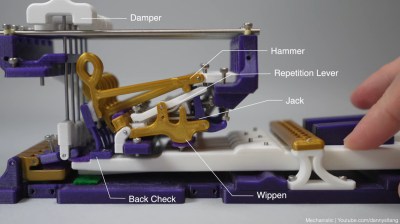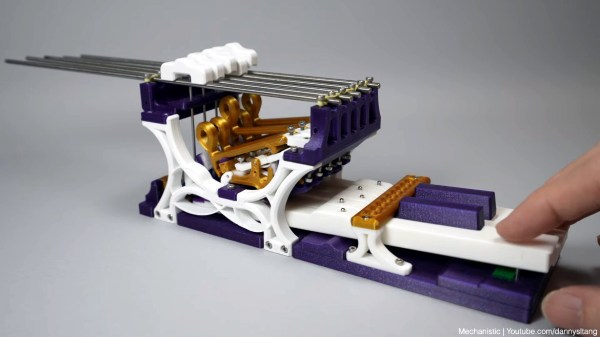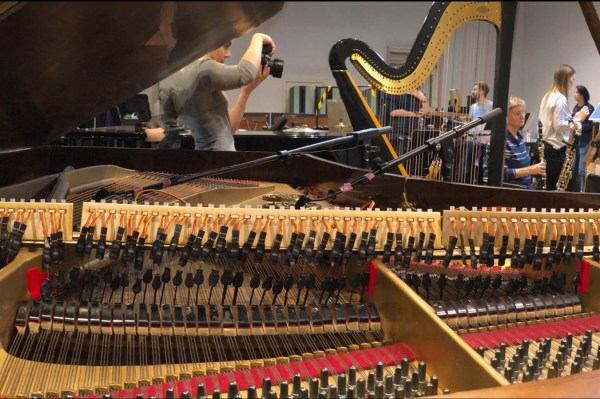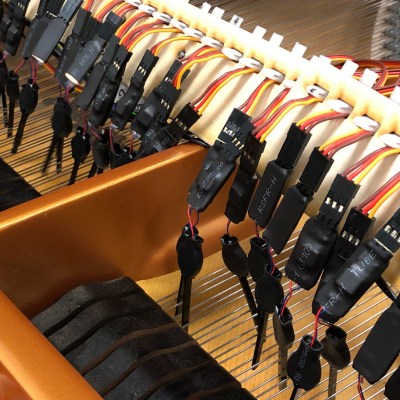Do you know how a piano works? Sure, you press a key and a hammer strikes a string, but what are the finer points of this operation? The intricacy of the ingenious mechanism is laid bare in [Mechanistic]’s 3D-printed scale model of a small section of the grand piano keyboard. The ‘grand’ distinction here is piano length-agnostic and simply refers to any non-upright. Those operate the same way, but are laid out differently in order to save space.
 The keys of an acoustic piano are much longer than just the part that shows — they are long levers that do a lot of work, including working their own sound dampeners. The really interesting part is the mechanism that allows a note to be played repeatedly without first releasing the key. This same mechanism also lets the pianist play softly, loudly, or somewhere in between based on the amount of pressure applied.
The keys of an acoustic piano are much longer than just the part that shows — they are long levers that do a lot of work, including working their own sound dampeners. The really interesting part is the mechanism that allows a note to be played repeatedly without first releasing the key. This same mechanism also lets the pianist play softly, loudly, or somewhere in between based on the amount of pressure applied.
So you know that the hammer strikes the string (or in this case, the rod), and you can probably figure that it backs off to let the string ring out. But there’s also this whole system that keeps the hammer close by for repeated strikings, as long as the person is holding down the key. Be sure to check it out in the build video after the break.
[Mechanistic] must be going for the standing ovation, because they say in the video’s comments that they will release STL files when they’re finished writing the assembly guide (!). What an encore that will be.
There are many ways to hack an acoustic piano, but don’t go thinking you can sub in guitar strings.














